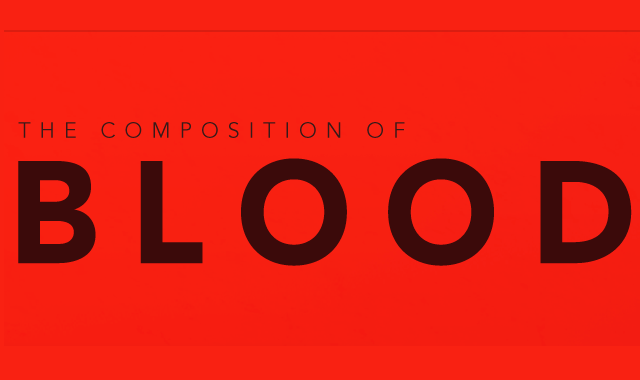Blood is a specialized body fluid in the circulatory system
of human and other vertebrates. An average adult possess five to six liters of
blood in their body. This fluid is vital to our lives, as it is responsible to
circulate oxygen through the body and serves many more important functions.
Despite its simple, deep-red appearance, blood is made up of many tiny chemical
components.
What is Blood Made Up Of?
Blood comprises of two main components:
- Plasma – (55%) Plasma is the fluid or aqueous part of blood, making up more than half of blood content.
- Formed elements – (45%) Formed elements refer to the cells, platelets, and cell fragments that are suspended in the plasma.
Plasma
Plasma is mainly made up of water (91%), salts, and enzymes.
It also transports vital proteins and components that serve many bodily
functions.
7 percent of the plasma contents consist of plasma proteins, and are created in liver. The plasma proteins are:
- Albumins: These proteins prevent fluids from leaking out of blood vessels into other parts of the body. They also carry essential molecules like calcium and help neutralize toxins.
- Globulins: These play a significant role in clotting blood and fighting against infections and are also transporters of hormones, minerals, and fats.
- Fibrinogen and Prothrombin: Both of these proteins help stop bleeding by facilitating the creation of blood clots during wound-healing.
Water and proteins make up 98% of plasma in blood. The other
2% is made up of small traces of chemical byproducts and cellular waste,
including electrolytes, glucose, and other nutrients.
Formed Elements
There are three different type of formed elements in the
blood. These are:
- Platelets (Thrombocytes): These are the cells of the immune system and their basic function is to form clots whenever there is bleeding from wounds. They play an important role because they not only work when there are small wounds like cuts but also for traumatic injuries and surgeries.
- White blood cells (Leukocytes): Their main purpose is to protect the body from infections. There are five type of these cells. Some produce antibodies, some respond to allergens, some attack foreign cells and viruses, and some clean up dead cells.
- Red blood cells (Erythrocytes): Their purpose is to deliver fresh nutrients and oxygen all over the body. They have a special protein ‘hemoglobin’, which carries oxygen and because of this protein blood has its bright red color.
Red blood cells make up 99% of formed elements, with the
other 1% comprised of platelets and white blood cells.
A typical red blood cell lasts for around 120 days, after
which it dies and a new cell replaces it. A human body constantly produces red
blood cells in the bone marrow, at a rate of millions of cells per second.
The Functions of Blood
So what does blood actually do in the human body?
Some of the important functions are listed below:
- Blood supports to regulate the body’s internal temperature by absorbing and distributing heat throughout the body.
- Blood is responsible to carry the body’s waste products to the kidneys and liver, which filter it and recirculate clean blood.
- The platelets, white blood cells, and plasma proteins in blood play an essential role in fighting infections and clotting.
- Blood transports oxygen to different parts of the body, giving an energy source. It also carries carbon dioxide to the lungs for exhalation.
For many creatures along with human beings, blood makes up
an integral component of the body that keeps us alive and going. While we all
know that we cannot live without blood, it serves many different functions in
the body that we often do not notice.


